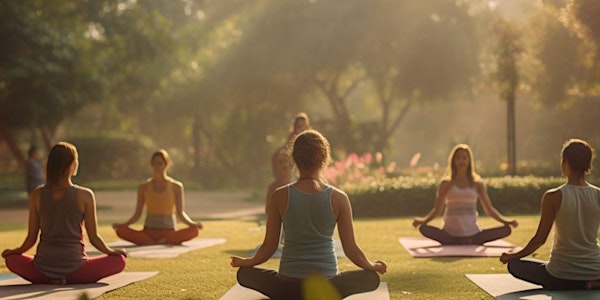
Pilates, Mezieres Method, Balance, Floorwork, Isolations & Flexibility
Get ready to tone those muscles, improve your posture, and level up your flexibility with a blend of Pilates, Mezieres Method, Balance exerc
Date and time
Location
Gymbox Bank, Lombard Street, London, UK
71 Lombard Street London EC3V 9AY United KingdomGood to know
Highlights
- 3 hours
- In person
Refund Policy
About this event
5 ELEMENTS COMBINED IN 3 HOURS
Flexibility ElementsCreating Space in the Body
Balance ElementGrounding and Stability.
Isolation ElementsBuilding on coordination and precision by training the body to move segmentally and with clarity.Refining control and attention to detail.
Fusion ElementsBringing together influences from yoga, martial arts, and floor-based techniques, offering a varied and integrative way to build strength and adaptability.
Moving with AwarenessSomatic work inspired by Pilates and the Mézières Method
LET’S GO DEEPER INTO DEEPER DETAIL:
Moving with AwarenessSomatic class style inspired on Pilates and Mézières Method
Postural and alignment-based conditioning, guided improvisation. Gentle and deep to connect structure with creativity.
Using techniques inspired by Pilates and the Mézières Method, dancers work slowly and consciously through movements that align the spine, activate deep core muscles, and release habitual tension. This might include small, precise movements on the floor with breath cues and resistance. In the final improvisation segment, dancers explore personal movement pathways, letting go of judgment and allowing technical work to inform more intuitive expression.
Fusion Element.
Brining together influences from yoga, martial arts, and floor-based techniques, offering a varied and integrative way to build strength and adaptability.
It may begin on the floor with grounding breathwork or mobility drills, then move into flowing sequences that transition between levels, directions. Core engagement, fluid weight transfer, and soft strength are emphasized. This approach supports versatility and helps dancers move between softness and power with confidence.
Isolation Element
This session builds coordination and precision by training the body to move segmentally and with clarity.Refining control and attention to detail.
Dancers may explore deeper isolation drills such as shoulder rolls, chest locks, spinal ripples, and isolated accents—gradually combined into layered or traveling movement in support of a cleaner technique and deeper musicality.
Balance Element: Grounding and Stability.
Balance in dance goes far beyond holding a static position. It involves staying connected to the ground, aware of momentum, and responsive in motion. The class helps dancers find stability through movement, not despite it, supporting grace in both stillness and flow.
Exercises might include shifting weight across different planes—such as rolling from the floor to standing, or gliding off-center in a circular pathway—while maintaining fluid control. Dancers explore moving through slow, spiraled descents and rises, directional changes, or pauses that challenge equilibrium. Work might also involve using the arms or head to offset balance deliberately, then recovering with intention. The goal is a grounded, responsive body that can stay poised and expressive even in the most dynamic or unpredictable transitions.
Flexibility – Creating Space in the Body
Flexibility is treated as a tool for movement quality not just reaching further, but moving more easily and expressively.
Dancers work through flowing sequences such as lunges into side bends, spinal undulations, and supported backbends to open key areas like the hips, chest, and spine. Active stretching like slow leg lifts or arm sweeps with resistance is used to build mobility that supports both grounded movement and expansive gestures. This flexibility supports smoother transitions, fuller extensions, and a greater sense of fluidity in both improvised and choreographed movements.
Each session encourages dancers to explore their own bodies with curiosity and patience refining not just how they move, but how they feel while moving. The result is a stronger, more connected, and more expressive presence in any dance setting.